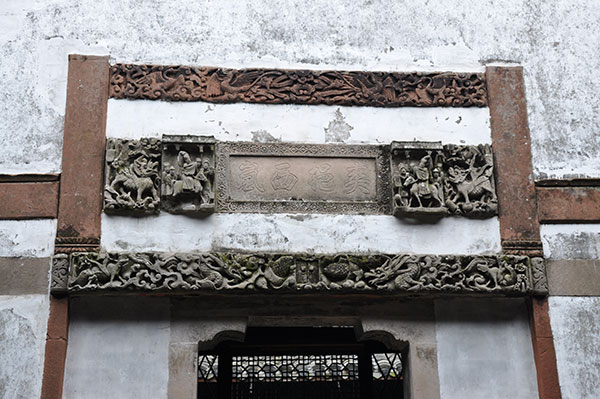A tale of three villages
During the Qing Dynasty, many village residents turned to business. Some of them opened stores along the streets while some ventured to other parts of China to set up shops.
Within decades, there were more than 20 "billionaires" among the Huang clan descendants. They established stores of good reputation one after another in the outside world, and also built complex mansions back in the village.
The grand mansion of Huang Xiuwen, the 27th generation of Huang Kechang, has the largest scale and finest craftsmanship. Located at the crossing of Back and Horizontal streets, its construction started in 1751 and lasted 38 years, even after Huang's death.
The mansion had a symmetrical layout, with five rows in depth. It once occupied a total of 5,500 square meters, with 12 halls, 36 pairs of wing rooms and 108 sitting rooms, as well as 48 courtyards.
Most parts of the mansion, which has been listed as a protected relic site by Jiangxi province, have been preserved.
Besides the lofty and spacious halls, you are unlikely to miss the many exquisite wooden and stone carvings in the ancient houses. For the house owners, they were not only nice decoration, but rich with connotations of well-known historical stories and symbols of good luck.
Many ancient stone wells are still in use in Luotian. Villagers love brewing tea with water from the Longevity and Health Well, the first well dug by their ancestors here. They believe its water gives them health and long lives.
Shuinan village was established by one of Huang Kechang's descendants, next to Luotian about 500 years after that village's founding.
Shuinan has more than 20 well-kept ancient buildings from the Ming and Qing dynasties. The village is best known for its exquisite carvings in the old houses and large collection of traditional pieces in its folk museum.

















